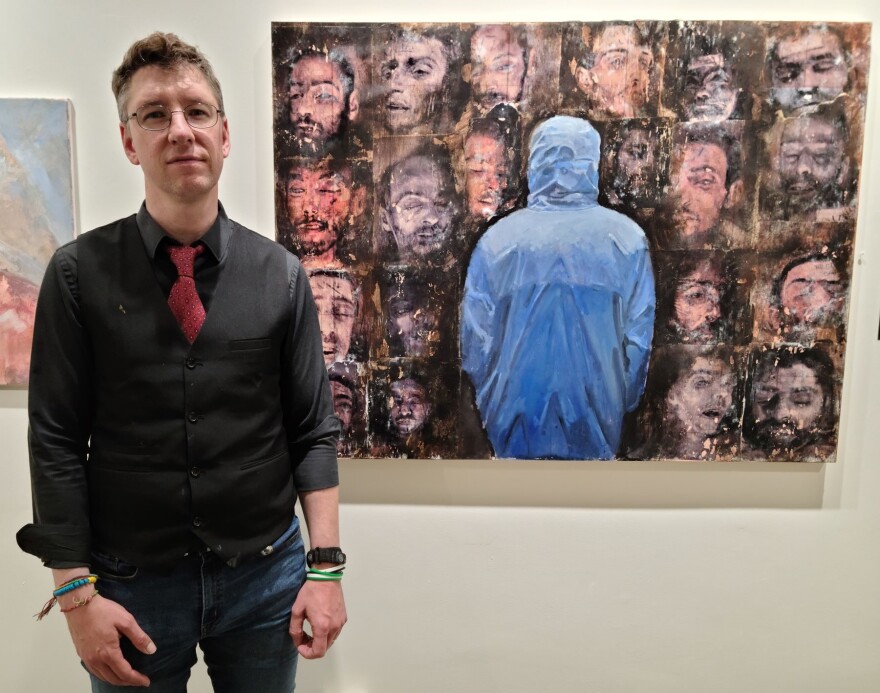The Western Illinois University Department of Art and Design is hosting an exhibit of paintings that document crimes against humanity.
The Caesar files
The paintings are recreations of photographs taken by a person known only as Caesar.
The former medical photographer for the Syrian government risked his own life by making tens of thousands of copies of photos of men, women, and children who were tortured to death in prisons run by Syrian President Bashar al-Assad’s regime.
Caesar smuggled the images out of Syria a decade ago to expose the atrocities to the world.
His identity remains unknown.
The art exhibit
The exhibit is called “The Caesar Files: War Crimes in the Digital Age.”
“The art I’ve been making is based on digital images that I have seen flash before me – like everyone else – on social media,” said artist Marc Nelson.
“The war crimes being committed by Putin in Ukraine and by Assad in Syria are there for anyone to see. So ‘War Crimes in the Digital Age’ is about crimes that are 24/7 at your fingertips, which is a weird reality to live in.”
The paintings will remain on display in the Annex Gallery at WIU through Nov. 17.
Nelson teaches art to fourth through eighth grade students in Kewanee, and also teaches students about the Holocaust through graphic novels and other means.
Nelson received his Art Education teaching certificate from WIU. (Editor’s note: Nelson reported for Tri States Public Radio while he was a student at WIU.)
Prolific production
The paintings in the exhibit are all recent, and they fill the single-room gallery. Nelson said he produced them quickly.
“I can’t spend too much time with a painting. My wife will tell you that if I spend too much time I start getting really stressed about it and I don’t ‘feel’ it anymore,” he said.
Does it disturb him to spend any amount of time on such a grim topic?
“I don’t want to simply scroll by these images (on social media). I don’t want to just see them and move to the next thing and move to the next thing. I want to sit with an image. As horrible as it is, I want to sit with it,” Nelson said.
“The process of art making is pretty slow. You’re using charcoal. You’re using slow drying paint. And that forces you to sit with that image and really see it.”
He said his paintings and drawings have been used by news agencies, Amnesty International, and others in recent years to explain what’s happening in Syria.
“Unbeknownst to me, the images I was making were useful to journalists because they could share them and they wouldn’t be blocked by the algorithm for censoring images because I was making images that were a little more abstract,” he said, adding that some of the paintings have also been used in documentaries.
Nelson believes there is still a place for analog forms of art, and that artists can engage and respond to what’s happening in the world.
“I feel like that’s something artists should do – respond to the age they live in. That’s something I try to teach my students. Art should be an integral part of the world conversation,” he said.
Tri States Public Radio produced this story. TSPR relies on financial support from our readers and listeners in order to provide coverage of the issues that matter to west central Illinois, southeast Iowa, and northeast Missouri. As someone who values the content created by TSPR's news department please consider making a financial contribution.



